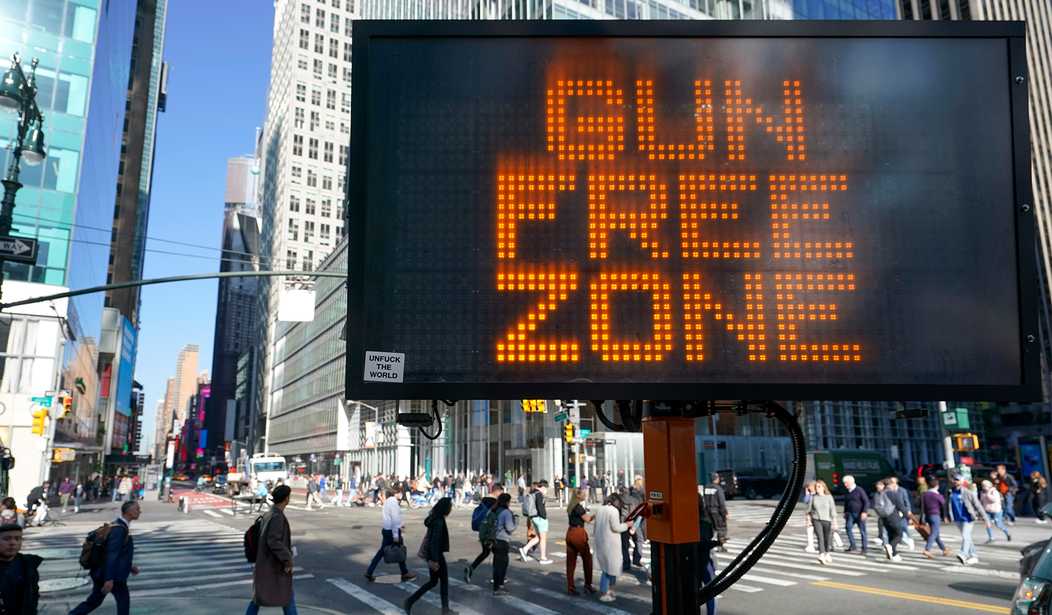One of my pet peeves about recent reporting is a misrepresentation of the NYSRPA v. Bruen decision saying that it “expanded” gun rights. In reality, the Bruen decision only restored gun rights to what they were before racist disarmament laws in the South and the bigoted anti-Italian Sullivan Law in New York.
The Bruen decision introduced a test that gun laws have a historical analogue around the time of the Founding or the ratification of the Fourteenth Amendment, and shifted the burden to the government to prove that their newfangled laws comport with the nation’s historical tradition of gun regulation. That test has many detractors, some of whom have publicly spoken in the aftermath of the lawsuit against the New Mexico Governor’s Executive Order. One of them is Professor Jacob Charles of Pepperdine University’s Caruso School of Law, who said the following to The Guardian (archived links):
Gun safety advocates like Lujan Grisham can attempt to find historical examples of gun regulation to justify the policy, said Jacob Charles, a professor at Pepperdine University’s Caruso School of Law and a constitutional law scholar focusing on the second amendment. For example, in the late 19th century, western frontier towns like Tombstone, Arizona, required visitors to disarm upon arrival. But, as Charles acknowledged, such historical arguments have generally failed in the courts so far.
“As a practical matter, I think the Bruen test certainly does make it harder for the government to sustain regulations today, more than it did under the prior framework,” Charles said. “It does leave governors and legislators in a hard spot when they’re facing crises of gun violence.”
I don’t know if it was Prof. Charles or the Guardian journalist who described the Governor as a “gun safety advocate” instead of a gun control proponent, but setting that aside, there’s more in the article:
“Pre-Bruen, a law like this might be upheld, but the absurd new standard that Bruen established completely scrambled second amendment law,” said Ciara Malone, legal director for the gun safety group March for Our Lives. “It demolished the previous means-ends scrutiny standard, under which the government has an ability to pass narrowly tailored laws that protect both public interest and the constitutional right, and replaced it with a preposterous historical analogue standard that requires that judges act as judges of historical record and search for precedent at the time of the nation’s founding for gun safety laws.”
The previous “means-ends scrutiny standard” that Ciara Malone praises was a joke, the original absurd standard, that was used by a judiciary playing fast and loose with the Constitution. Contrary to Malone’s claims, there were hardly any narrowly tailored laws. Under that standard, Washington D.C.’s total ban on handguns survived because the government’s interest in reducing “gun violence” was important and a blanket ban on handguns was “substantially related” to that goal. If the means were effective, Washington DC would have been one of the safest cities in America, but that was not the case. What the ban did accomplish was destroy the constitutional rights of lawful people.
The same can be said of numerous other gun laws that were rubber-stamped using means-ends scrutiny. Colorado’s “high capacity” magazine ban and other gun control laws had the opposite result of the government’s goal; crime increased since 2013 in Colorado, with Denver violent crime reaching its second highest in May 2023. Illinois’ Firearms Owners Identification Card (FOID) passed judicial muster under means-ends scrutiny, but Chicago’s violence was and still remains so bad that the city is called “Chiraq,” a portmanteau of Chicago and Iraq. New York’s “assault weapon” ban, passed with less debate than a law making yogurt the official state snack, was also approved under means-ends scrutiny, but that didn’t result in lower crime or prevent the Buffalo massacre.
If the ends aren’t met, why are the means still kept alive? Unfortunately, looking at states like California, New York, and Colorado that pass iteration after iteration of gun control, the failure to achieve the ends gives legislatures the impetus to use more of those ineffective means.
The Supreme Court’s decision in NYSRPA v. Bruen prevents lower court judges from indulging in the interest balancing chicanery that was previously used to approve every constitutionally offensive law under the sun. Bruen was the remedy to means-end shenanigans. Ciara Malone’s claim that Bruen requires judges to search for precedent is false; it’s incumbent upon government lawyers to do the search and present them to judges. If anything, judges’ jobs are easier under Bruen because they don’t have to evaluate and balance the means and ends.
The anti-Bruen chorus will only get louder as more firearms restrictions are overturned by the judiciary faithfully applying the Bruen test. Politicians and the media will screech about it. The Second Amendment community must keep calm and carry on. There is almost a century’s worth of infringements to overturn.








Join the conversation as a VIP Member